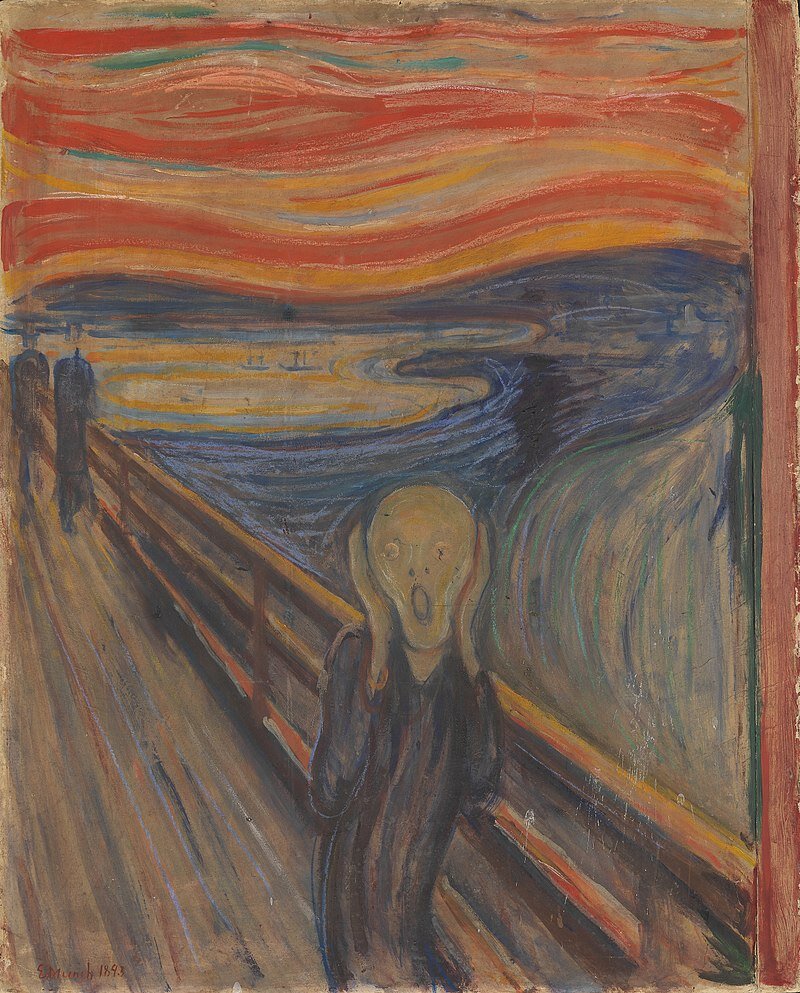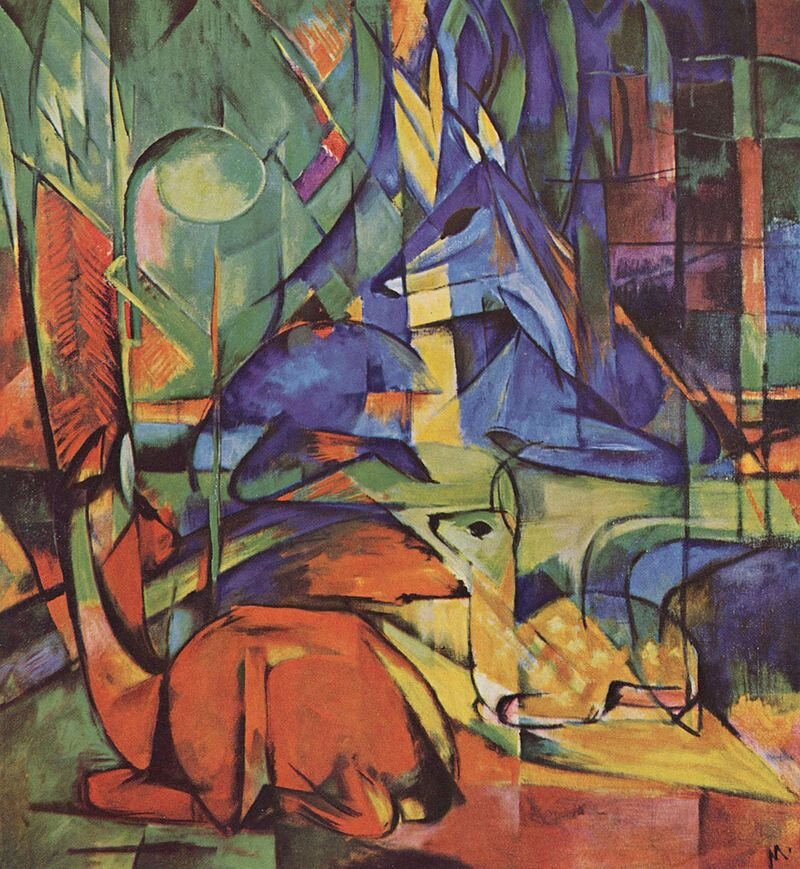Expressionism is a modernist movement, initially in poetry and painting, originating in Northern Europe around the beginning of the 20th century. Its typical trait is to present the world solely from a subjective perspective, distorting it radically for emotional effect in order to evoke moods or ideas. Expressionist artists have sought to express the meaning of emotional experience rather than physical reality.
Expressionism developed as an avant-garde style before the First World War. It remained popular during the Weimar Republic, particularly in Berlin. The style extended to a wide range of the arts, including expressionist architecture, painting, literature, theatre, dance, film and music. In a historical sense, much older painters such as Matthias Grünewald and El Greco are sometimes termed expressionist, though the term is applied mainly to 20th-century works.
Wassily Kandinsky, Der Blaue Reiter, 1903
The Expressionist emphasis on individual and subjective perspective has been characterized as a reaction to positivism and other artistic styles such as Naturalism and Impressionism. The style originated principally in Germany and Austria. There were a number of groups of expressionist painters, including Der Blaue Reiter and Die Brücke.
Der Blaue Reiter was based in Munich and Die Brücke was originally based in Dresden. Die Brücke was active for a longer period than Der Blaue Reiter, which was only together for a year (1912). The Expressionists were influenced by various artists and sources including Edvard Munch, Vincent van Gogh, and African art. They were also aware of the work being done by the Fauves in Paris, who influenced Expressionism's tendency toward arbitrary colours and jarring compositions.
Franz Marc, Rehe im Walde
In reaction and opposition to French Impressionism, which emphasized the rendering of the visual appearance of objects, Expressionist artists sought to portray emotions and subjective interpretations. It was not important to reproduce an aesthetically pleasing impression of the artistic subject matter, they felt, but rather to represent vivid emotional reactions by powerful colours and dynamic compositions.
El Greco, View of Toledo, 1595/1610 is a Mannerist precursor of 20th-century expressionism.
Kandinsky, the main artist of Der Blaue Reiter group, believed that with simple colours and shapes the spectator could perceive the moods and feelings in the paintings, a theory that encouraged him towards increased abstraction. The ideas of German expressionism influenced the work of American artist Marsden Hartley, who met Kandinsky in Germany in 1913.
August Macke, Lady in a Green Jacket, 1913
In late 1939, at the beginning of World War II, New York City received a great number of major European artists. After the war, Expressionism influenced many young American artists. Norris Embry (1921–1981) studied with Oskar Kokoschka in 1947 and during the next 43 years produced a large body of work in the Expressionist tradition. Norris Embry has been termed "the first American German Expressionist". Other American artists of the late 20th and early 21st century have developed distinct styles that may be considered part of Expressionism.
Alvar Cawén, Sokea soittoniekka, 1922
Another prominent artist who came from the German Expressionist "school" was Bremen-born Wolfgang Degenhardt. After working as a commercial artist in Bremen, he migrated to Australia in 1954 and became quite well known in the Hunter Valley region. The Expressionist movement included other types of culture, including dance, sculpture, cinema and theatre.







